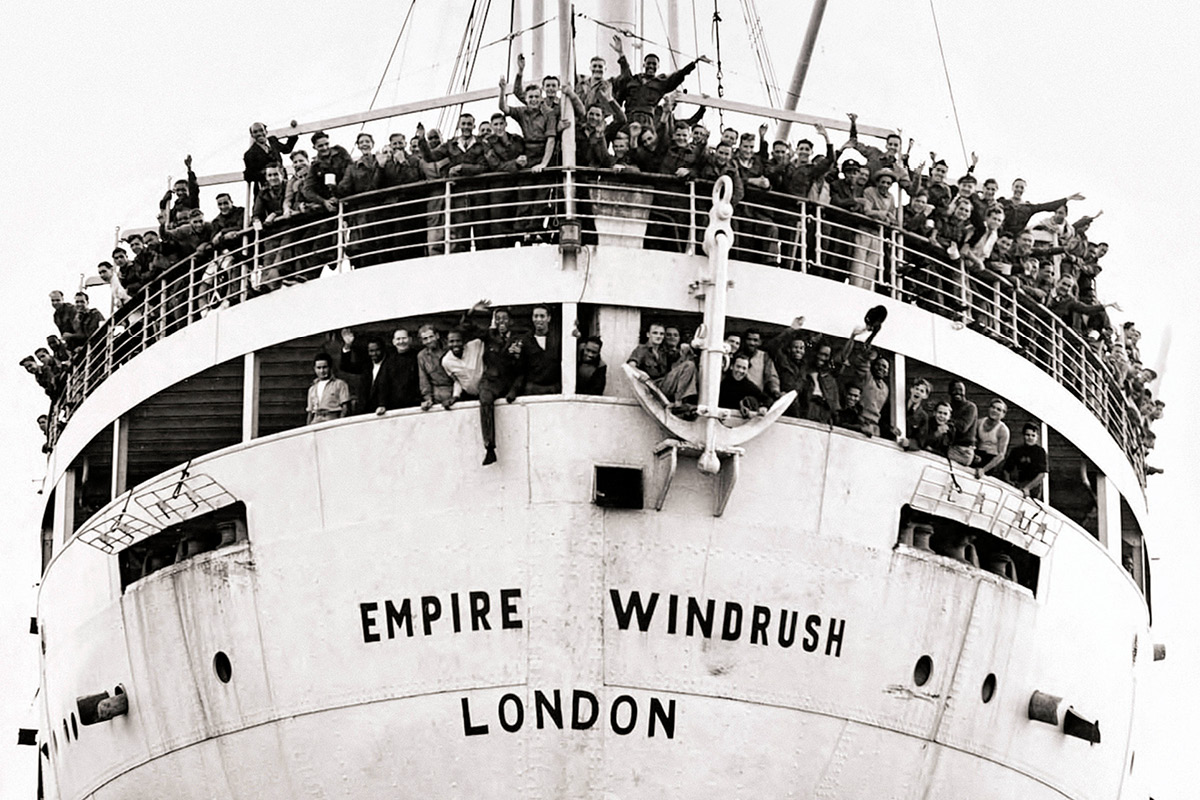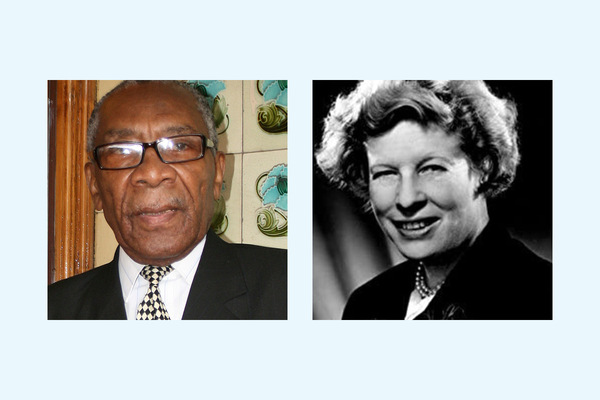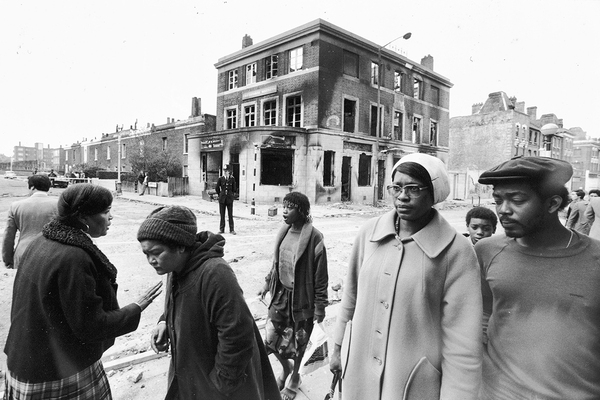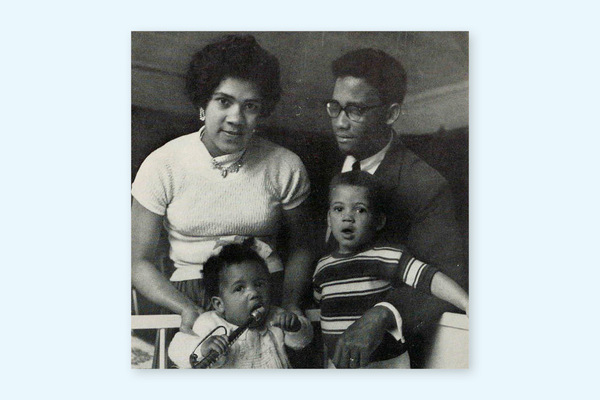You are viewing 1 of your 1 free articles
Windrush to G15: the history of Metropolitan Thames Valley
Metropolitan Thames Valley is now a big, mainstream association, but Metropolitan was set up to provide housing for the Windrush generation. Dominic Brady looks at the social landlord’s origin story and whether it influences operations today

“The houses had coal fires and paraffin lamps, and the toilets were outside. We had no fridge in our home so we’d put meat on the window ledge to keep it fresh,” recalled Keith Shaw in a 2015 interview with Metropolitan Housing Trust, organised to mark him having been a tenant for 50 years.
Mr Shaw, who arrived from Jamaica at Tilbury Docks aged 16 in 1951, paints a vivid picture of what housing was like for many Caribbean people who came to the UK during the 1940s and 1950s. It is a picture Mr Shaw would later go on to change in helping to set up the Metropolitan Coloured People’s Housing Association (MCPHA), by fundraising.
A total of 492 people came to the UK on HMT Empire Windrush in 1948 with the promise of employment and prosperity in return for their help in rebuilding the country after World War II. Many in what became known as the Windrush Generation, like Mr Shaw, settled in Brixton, south London, with many securing jobs building houses to replace those damaged in the war.
“They work, they die for Britain – it’s time to sweep away all prejudice”
However, in doing so they were subject to particularly egregious housing conditions themselves. Prevalent racism at the time meant that many landlords would not accept West Indian people, leaving them with only the shabbiest properties to rent.
The need for better housing was clear and this formed the beginnings of what is known today as Metropolitan Thames Valley housing association. (A word on the name – the term ‘coloured’ was used in Metropolitan’s name when it was first established. It is now considered outdated and a racist term. Inside Housing has been unable to find out what tenants thought of this at the time. The Oxford English Dictionary says that until the 1960s, it was considered an acceptable term in the UK, but we have attempted to minimise its usage in this story.)
Lady Molly Huggins, wife of the governor of Jamaica, was appalled by the housing conditions available to Windrush migrants and set about looking at how to provide affordable housing in areas such as Tottenham
and Brixton.
At the time in the late-1950s, she argued: “They work, they die for Britain – it’s time to sweep away all prejudice.”
In 1957, MCPHA was created and founder Lady Molly began seeking donations from her wealthy friends and local government. One of those aiding Lady Molly’s fundraising efforts was Mr Shaw, quoted above about his early experiences.
Early archive materials including leaflets shed light on how the organisation started out.
“The problem,” reads an original MCPHA leaflet. “Many people from the Commonwealth, especially from the West Indies, but also from Africa, India and Pakistan, are living in the most appalling conditions of overcrowding for which they have to pay extortionate rents. Because people recently came from overseas have not the necessary residence qualifications they are not eligible for inclusion on housing lists.”
“It wasn’t just white middle-aged men of a certain background and that made for a strong business and strong ethos”
The solution, according to the leaflet, was “buying fairly large houses and converting them into flats”, which would allow “the real integration of newcomers from overseas into the whole of London”.
The leaflets worked, and the newly formed housing association went on to buy its first property in Stoke Newington, Hackney.
After buying up more properties in London, the association eventually expanded into the Midlands and became known in 1963 as Metropolitan Housing Trust (MHT). By 1968, the housing association had 200 homes in management and 560 in development, and was developing co-ownership schemes in the East Midlands, as well as buying run-down street properties in Lambeth and Haringey for renovation.
Thereafter, decades of slow and steady expansion followed, with the Refugee Housing Association joining the group in 1997.
By the 2000s, the organisation had grown exponentially, completing mergers with the likes of Granta Housing Society in 2005 and Walbrook Housing Group in 2007.

Bill Payne, who was chief executive of MHT from 2008 to 2011, recalls his shock when he joined and realised that it was not one organisation but roughly 28.
“There had been a lot of work on growth but not much on culture or unity, so I spent a fair amount of time just going out, meeting people and asking questions. That growth had stretched everything. I began to realise my job was establishing a culture that everyone could sign up to and that we could crack on with,” he tells Inside Housing.
Donald McKenzie, who was head of treasury at the time, also remembers a “gangly” organisation that needed restructuring – a task that he was in charge of.
“We have a very strong sense of the need for justice and speaking out against racism, and I think that all leads back to [Metropolitan’s] roots and where it came from”
In his role Mr McKenzie sought to consolidate the various organisations, which was not without its challenges. “There were challenges from board members on smaller boards who didn’t want to give up, from a personal perspective. There was a desire not to lose some of the history of the smaller organisations,” he explains.
But during the decades of growth, had MHT strayed from its original purpose as a small Windrush association?
“I think all big housing associations have gone through that stretch,” says Mr Payne. “I don’t think there’s anything wrong with growing if you are housing more people.”
While it was housing more and more people as it expanded throughout the decades, MHT found itself with a workforce that was not reflective of the communities it was housing.
Indeed, the housing association only appointed its first Black board member, Wesley de Mendonca, in 1977, breaking up the previously all-white board.
When the Conservative government of the 1980s encouraged the proliferation of Black, Asian and minority ethnic housing associations, MHT was almost entirely white-led.
The ethnic make-up stayed fairly one-sided throughout the decade, and by 1992, just 9% of MHT staff were from Black, Asian or minority ethnic backgrounds. In the years that followed, MHT’s workforce slowly began to resemble more closely the communities that it served and by 2007, 45% of staff were Black, Asian or minority ethnic.
“The executive team was diverse in ethnicity when I joined,” says Mr McKenzie. “It wasn’t just white middle-aged men of a certain background and that made for a strong business and strong ethos.”
He adds: “There have been periods where the board has moved to be less diverse, but now it is back to being the most diverse organisation I’ve ever worked for.”
If MHT needed a reminder of the importance of building cohesive communities, in 2011 it got one.
In August of 2011, Mr Payne remembers receiving a phone call from a colleague telling him that one of its schemes in Tottenham had been burned to the ground during days of rioting in London. The riots were sparked when local man, Mark Duggan, was shot dead by police, leading to racially charged tensions between the community and the local police force.
“It was basically founded on principles of marginalised people being supported and I think they are still doing that today”
“It was lucky none of the residents were injured and we moved quickly to support our affected tenants,” he explains. “We had a brilliant team getting money out of cash points, getting people housed and we set up a support network.”
Reflecting on his time at MHT, Mr Payne believes the values instilled in the organisation by Lady Molly have remained throughout.
“It was basically founded on principles of marginalised people being supported and I think they are still doing that today,” he says.
He gives the example of MHT’s creation of a hostel for gay men fleeing domestic violence, which was the only one of its kind in Europe at the time.
Mr Payne mentions a “very strong network of LGBTQ staff” who he worked closely with throughout his time at MHT, which he says “very logically fell back to the origins” of the housing association.
Geeta Nanda, current chief executive of recently merged Metropolitan Thames Valley Housing (MTVH), agrees that the principles of the original organisation are still intact today. She tells Inside Housing: “We have a very strong sense of the need for justice and speaking out against racism, and I think that all leads back to its roots and where it came from. You still feel that really strongly here.”
Ms Nanda cites the Metropolitan Migration Foundation, an arm of the housing association that was established to help migrants and the communities they live in, including refugees and asylum seekers.
Ms Nanda is also quick to praise the group’s “great care and support business, which isn’t very well known”. The group currently has 20 Care Quality Commission-registered services in the business and plans to develop its homelessness services in the coming years.
As for creating a diverse workforce in senior positions, Ms Nanda believes MTVH is a guiding light within the sector. “I don’t think there are many housing associations out there that have a Black chair and an Asian chief executive, so we are in quite a privileged position,” she explains.
Regrettably, 64 years after Lady Molly’s plea to “sweep away all prejudice”, the message is yet to bear out in wider society, as identified by current chair Althea Efunshile.
In MTVH’s annual report, Ms Efunshile says: “The recent shocking death of George Floyd in the USA brought into sharp focus the oppression and racism that still exists in our world. MTVH, focusing firmly on our values – we care, we dare and we collaborate – strives to be absolutely anti-racist, both in terms of the organisational environment we create for our colleagues, and the services we provide to our customers.”
The challenge now will be maintaining this culture as it continues to expand as one of the biggest landlords in the country.
Update at 10:00, 08.04.21: Geeta Nanda quote corrected to clarify MTVH is speaking out against racism, not anti-racism as previously quoted.
Sign up for our daily newsletter
Already have an account? Click here to manage your newsletters












